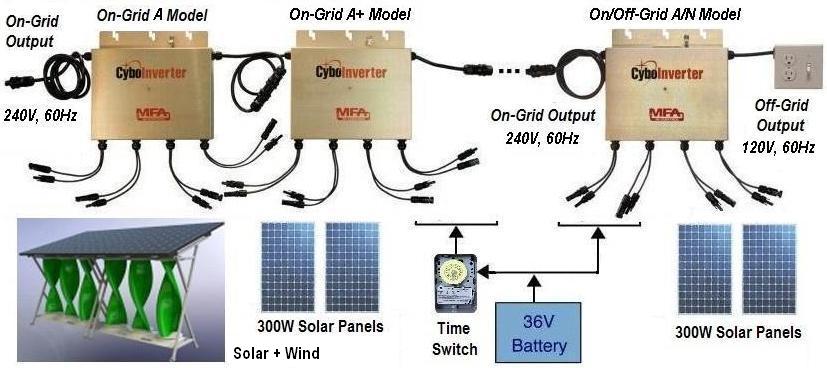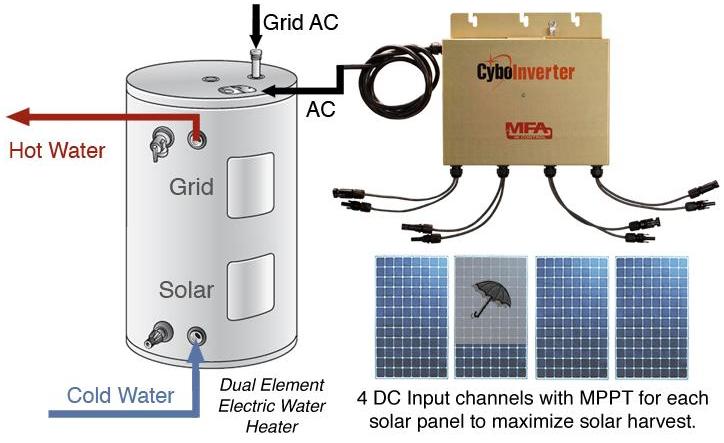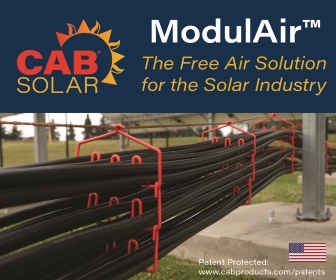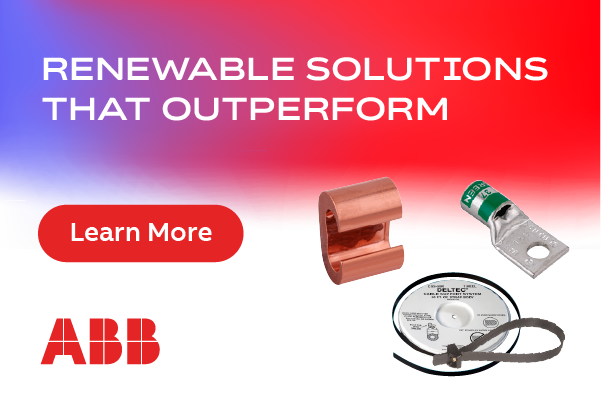Smart Renewable Energy Systems for Grid Stabilization
The rapid growth of solar energy deployment causes major challenges to grid stability known in the industry as “The Duck Curve”. Figure 1 is the “Net Load” graph by the California Independent System Operator (ISO). During the non-summer months on an average day, the grid can run into the risk of over-generation from 11am to 5pm, and then need to ramp up generation quickly from 5pm to 8pm as solar drops off.
These curves produce a “belly” appearance and then ramp up to an “arch” similar to the neck of a sitting duck. Over-generation is risky because many nuclear power plants and base load fossil fuel power plants cannot ramp down the power production during the day. At certain times of the day, the grid cannot take any more power. Otherwise, it will have an over voltage and over frequency problem which can have serious consequences. In addition, according to the study by ISO, if California meets the 33% renewable energy goal for grid power by 2020, power plants must be able to ramp up 13,000MW of generation within 3 hours in late afternoon to meet the demand. Such supply and demand swings will be a huge challenge to the current infrastructure.
As indicated by Clyde Loutan, Sr. Advisor at ISO, the Net Load reached as low as 14,160MW on April 5, 2015 at 3:46pm, which is near the 2017 curve. This means the grid stability problem is approaching about 2 years ahead of the original estimated schedule. This is quite astonishing and the renewable industry needs to react quickly before it is too late.
The ISO has suggested that any methods and systems which can help level the duck curve are welcome. For instance, LED lights can be used to reduce the power consumption in the evening, which can shorten the “arch”. Equally, there are additional simple and easy solutions which can be beneficial to both users and the grid.
Off-grid solar power for electric water heaters
Most electric water heaters on the market have 2 heating elements, called dual-element water heaters. The 40 to 50 gallon water heaters are popular and well priced. In the U.S., AC from a standard 30A branch circuit with 240V is connected to the water heater to supply power. According to a study by the Department of Energy, water heating is the second biggest user of electricity in a home.
The figure at left illustrates a specially designed off-grid inverter connected to the lower heating element of the water heater to deliver solar energy to heat the water. The temperature setpoint for the lower element can be set much higher than the upper element. This way, the upper element, which consumes grid power, does not turn on unless a lot of hot water is used within a short period of time. Since grid power can heat the water quickly from the upper heating element, hot water will always be available.
In general, an inverter with four 300W solar panels can supply sufficient hot water for a 2 person family. Two daisy-chained inverters with eight 300W solar panels can supply enough hot water for a 3 to 4 person family. This is a simple way to store solar energy in the form of hot water, which will not only reduce electric bills, but also help level the duck curve. This is a battery-less, off-grid system which is easy to install, cost-effective, and has no battery-related headaches.
Combining solar and wind power
 The figure at left shows three daisy-chained power inverters, each of which has 4 input channels which can connect to solar, wind, hydro, fuel-cell, and battery as DC sources. The unique multiple input channel design offers a seamless integration of renewable energy sources.
The figure at left shows three daisy-chained power inverters, each of which has 4 input channels which can connect to solar, wind, hydro, fuel-cell, and battery as DC sources. The unique multiple input channel design offers a seamless integration of renewable energy sources.
The On-Grid A Model connects to a hybrid DC source which has 3 solar panels and 1 wind generator. Since each input channel of the inverter has its own control and MPPT for the solar panels and wind generator, installation is easy and energy harvest is maximized. Because wind does not have the same power generation pattern as solar, a hybrid renewable energy system can help level the duck curve.
Enabling time-based grid power injection
The On-Grid A+ Model connects 2 solar panels and a 36V battery. It is an enhanced version of an on-grid inverter which can pull power from batteries and send AC power to the grid. The battery is charged using grid electricity during the day when the grid has excess power. A time switch is used to connect and disconnect the battery to the inverter. This way, one can set the switch to allow the inverter to send power during grid peak hours.
The On/Off-Grid A/N Model can operate as an on-grid inverter when the grid is on. When the grid is down, both A model and A+ model will shutdown immediately. The A/N model will switch to its off-grid mode automatically and pull DC power from the same 36V battery and provide backup AC power through its off-grid output. The On/Off-Grid A/N Model inverter is designed for the U.S. market so that its on-grid output generates 240V, 60Hz AC to the grid and its off-grid output generates 120V, 60Hz AC to run 120V AC loads. Different inverter models are available to meet the AC standards globally.
These systems are scalable designs. Larger systems can be implemented with multiple on-grid and on/off-grid sub-systems of different sizes. The total on-grid output power from each sub-system can be combined in an electric panel to be sent to the grid. Each sub-system will have its own independent off-grid circuit to power the connected AC loads when the grid is down. This enables a “plug-and-play” installation to encourage large scale deployment.
A system with demand-based power injection functions can have a large impact on grid power stabilization, where a large number of power inverters can send power to the grid based on commands from the grid dispatch center.
Utility companies should offer incentives to encourage home owners and commercial users to implement systems that can help stabilize the grid. On-demand grid power injection, demand-response pricing, and power arbitrage should be encouraged and rewarded. Renewable energy technology and product companies are working diligently to develop useful products for such purposes.
Dr. George S. Cheng is the CTO at CyboEnergy, Inc.
CyboEnergy, Inc. | www.cyboenergy.com
Volume: September/October 2015










.png?r=6445)


